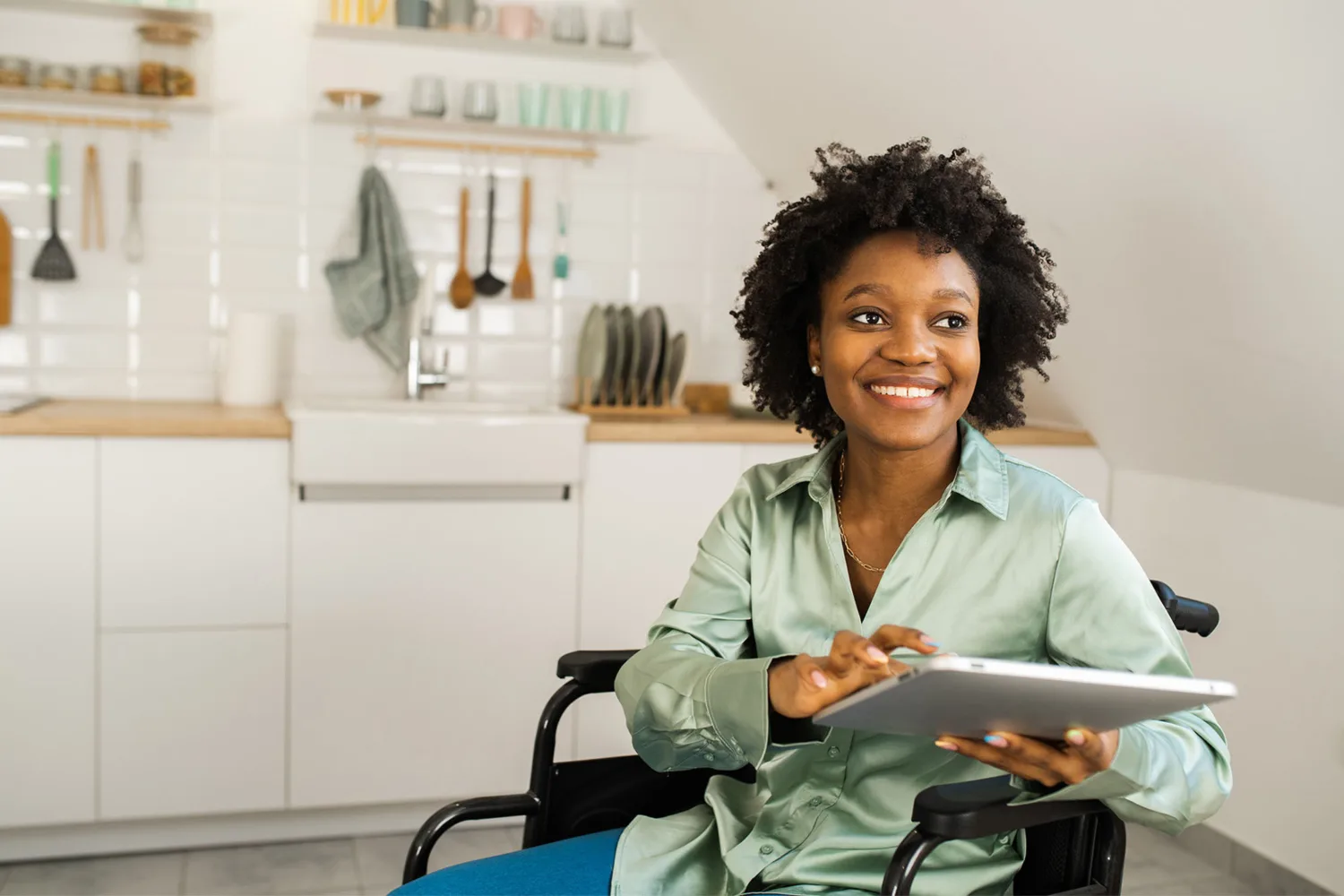
Exciting Assistive Technology for People with Disabilities (And How to Get It)
Posted on: Aug 01, 2025
As technology progresses, we’re living in a new world of innovative assistive technology for people with disabilities that can sometimes feel like science fiction, in the best possible way. Advances in tech have opened up doors to greater autonomy and independence. From AI to assistive glasses, off-road bikes, and smart wheelchairs, find out more about this new tech (and how you can get it, too).
If you want to try out assistive devices before you buy your own, MonTECH loans assistive technologies and adaptive equipment to Montanans for free. Set up an online or in-person consultation, and pick up at their location, or get most items shipped to your home for free. MonTECH can also provide demonstrations, or help you secure financial assistance for permanent equipment that’s all your own! Contact MonTECH directly, or reach out to Ability Montana for more information and referrals |
New Assistive Technology for People with Disabilities
Artificial Intelligence-Driven Technologies
Artificial intelligence is technology that enables computers to simulate human thinking, learning, understanding, and creativity. Much of the new assistive technology for people with disabilities incorporates artificial intelligence in one way or another. Here are a few of the ways people with disabilities can use AI as an assistive technology:
AI has helped a man walk naturally after a spinal cord injury that resulted in paralysis. Researchers have used AI to create a bridge between the patient’s brain and spinal cord, with the help of wireless implants with antennae for the technology to communicate across the injury location. This technology is still in clinical trials, but people with limited or no ability to use both hands due to cervical spinal cord injury or amyotrophic lateral sclerosis (ALS) can join the Neuralink Patient Registry to be notified of upcoming opportunities to participate.
AI-driven smart homes offer assistive technology like voice assistants and automatic systems to help people with a wide range of disabilities. Smart refrigerators can help you generate a virtual grocery list and even place an order online when you run out of an item. You can turn smart light bulbs on and off right from your smartphone, without having to reach the physical switch. Public funding and loans through the Montana Assistive Technology Program can help make smart home upgrades more affordable and mini loans can help people with disabilities purchase smart home technology.
Chatbots and generative AI software like ChatGPT can help students with learning disabilities understand material better and create organizational tools. ChatGPT software is available to users for free.
iSee Assistive Glasses
Assistive glasses from iSee have the potential to change the way people who are blind or who have low vision navigate the world. Combining AI and wearable devices, sophisticated sensors in these glasses provide continuous audio feedback about the environment around the user. They allow users to identify objects and orient themselves in their environment without relying on a sighted guide, guide dog, or cane.
Accessing Assistive Glasses
iSee glasses are currently available for preorder, shipping in early 2025.
Insurance may cover this type of assistive technology.
Grant funding for assistive technology can help fill in the gaps.
Bowhead Adaptive Off-Road Bikes
There are a lot of adaptive recreation devices that help people with mobility disabilities get out on the trail. Bowhead bikes are responsive off-road electric bikes for people with mobility disabilities who love to spend time off pavement.
The brand’s FLOW articulation lets the rider move over obstacles like ruts, roots, and other trail features without tipping, letting them head into the backcountry on even wilder adventures. And the narrow wheel width that this technology allows – 29 inches from axle to axle – means these electric bikes can maneuver many standard-width, dirt singletrack trails, helping cyclists with disabilities go beyond paved ADA accessible trails.
Accessing Adaptive Mountain Bikes
DREAM Adaptive Recreation in Whitefish, Montana, has a fleet of Bowhead bikes and other adaptive outdoor recreation gear for program participants to try out for free.
Eagle Mount in Bozeman offers adaptive mountain bike rides and rentals, and Ability Montana offers adaptive outdoor recreation programs year-round.
Adaptive bikes may be covered by some insurance as Durable Medical Equipment (DME).
Grant funding can help cover costs that insurance won’t.
Smart Wheelchairs
It’s not just smart homes: now we have smart wheelchairs, too. And wheelchair users don’t always need to upgrade their whole wheelchair to try out new assistive technology.
We’re seeing new advancements in assistive technology for people with disabilities like:
LUCI, an adaptive technology company, adds smart technology to a user’s existing power wheelchair, so they can keep using the systems they like, with new advancements, too. Assistive technology from LUCI includes sensors that communicate with the MyLuci app to monitor seat pressure points and adjust seat position as needed for a more comfortable experience. LUCI has a funding toolkit with information on how to get insurance funding for your upgrades, as well as letters of medical necessity for American customers.
Autonomous navigation allows wheelchair users to program destinations into their smart chair, using lidar sensors to navigate obstacles to get to the desired location without needing the user’s input. Consumers can purchase autonomous wheelchairs from companies like Adventus Robotics.
The Robooter X40 is a folding power wheelchair with zero turning radius that users can navigate with a joystick or with their mobile app. Their wheelchairs are available to consumers for purchase online.
Paying for Smart Wheelchair Upgrades
The Wheel to Walk Foundation helps fund medical and adaptive equipment not funded by insurance to people with disabilities aged 20 and under.
The Bryon Riesch Paralysis Foundation offers charitable grants to individuals suffering from paralysis to live a more independent and fulfilling life.

Local Partnerships for Assistive Technologies
Adaptive technologies don’t always require microchips and robots – they can involve simple adjustments to everyday items.
Ability Montana partners with local companies that have 3D printers to create useful tools as simple as a piece of plastic that can help a fork stay attached to your hand. We refer consumers to community partners who charge only for materials – about $3-$5 per piece – to print these practical tools.
We also partner with a local pottery studio in Butte called Hungry Hill to create adaptive kitchen ceramics. Specific examples are plates with a curved rim on one half (to make scooping food onto a spoon easier) and a mug with two handles for more stability.
If you’re interested in trying out any of these technologies, reach out to Ability Montana. Staff can connect you with additional resources, including grants and funding for assistive technology that can help you live a more independent life.
